Introduction
Container orchestration is revolutionizing the way we manage and streamline the deployment, scaling, and operational aspects of containers. It offers significant efficiency and portability advantages, allowing applications to function uniformly across diverse environments. Kubernetes, a cornerstone of cloud-native computing, celebrates its tenth anniversary as a critical component in managing sophisticated websites and cloud services.
With solutions like Docker and the integration of open standards and tools, container orchestration is reshaping backend system development and management. In this exciting era, developers and organizations are navigating these advancements to build resilient, scalable, and efficient applications. Container orchestration is not just about maintaining the status quo; it's about empowering organizations to innovate and stay ahead in a competitive landscape.
What is Container Orchestration?
Managing and streamlining the deployment, scaling, and operational aspects of the units completely transforms the way we handle them. It's a critical innovation for handling complex systems spread over various nodes, ensuring optimal resource usage and maintaining service availability. By abstracting underlying processes, orchestration frameworks empower organizations to handle software more efficiently.
The shift from virtual machines to containerization marked a pivotal change in how software is deployed, with containers offering significant efficiency and portability advantages. The brilliance of this technology lies in its ability to encapsulate a program's code, libraries, and dependencies into a single package, functioning uniformly across diverse environments. This portability eliminates compatibility concerns, allowing seamless transitions between development and production.
The evolution of container orchestration is epitomized by Kubernetes, which, over the past decade, has emerged as a cornerstone of cloud-native computing. Its role is often unseen yet integral to the operation of sophisticated websites and cloud services. 'Kubernetes' tenth anniversary celebrates its contribution to the significantly more resource-efficient and cost-effective management of software, compared to the conventional use of virtual machines.
In addition to Kubernetes, solutions like containerization technology enhance the development and shipment of applications, offering an open platform that separates applications from infrastructure. This separation accelerates software delivery and enables consistent management practices. Docker's influence extends to fostering a community of developers and users, as reflected in the 2024 Docker State of Application Development Report, which delves into the software development landscape, capturing insights from over 1,300 professionals.
Furthermore, the integration of open standards and tools, such as those provided by OpenTelemetry, is paving the way for vendor-neutral monitoring ecosystems. These ecosystems leverage the collective strengths of industry-leading tools like Prometheus to offer tailored solutions.
As we explore further into the intricacies of container coordination, we observe the emergence of a technological rebirth that transforms backend system development and management. It's an exciting era for developers and organizations alike as they navigate these advancements to construct resilient, scalable, and efficient software.
Benefits of Container Orchestration
Container orchestration revolutionizes the management and deployment of software, akin to moving entire rooms in a house seamlessly to any location. It's a game-changer for businesses, enabling them to encapsulate their software in containers that are self-contained and portable. This means software can be easily moved and configured across various computing environments—whether it's a local machine, a cloud server, or another system—without compatibility problems or conflicts.
Over the last decade, Kubernetes has emerged as a central player in orchestrating modern computing, underpinning most sophisticated websites and cloud services. Its impact is so profound that sophisticated web services and cloud operations are unthinkable without Kubernetes managing the intricate background processes. The emergence of containerization, led by Docker, has significantly reduced the resources needed for running programs, providing a more economical and effective alternative to traditional virtual machines (VMs).
Businesses now enjoy the flexibility of moving applications between platforms, a stark contrast to the pre-container era where software was typically anchored to its initial environment. Using container coordination, businesses can efficiently handle a diverse range of units, guaranteeing uniformity and dependability throughout different implementation stages. This coordination has become indispensable for companies like Tabcorp, which juggles diverse teams and services. By implementing a system for managing and organizing containers, Tabcorp addressed the difficulties of manual setups and inconsistencies, streamlining their development lifecycle.
In this transformative era, the management and development of backend systems are constantly evolving, providing a strong and scalable solution for businesses driven by technology today.
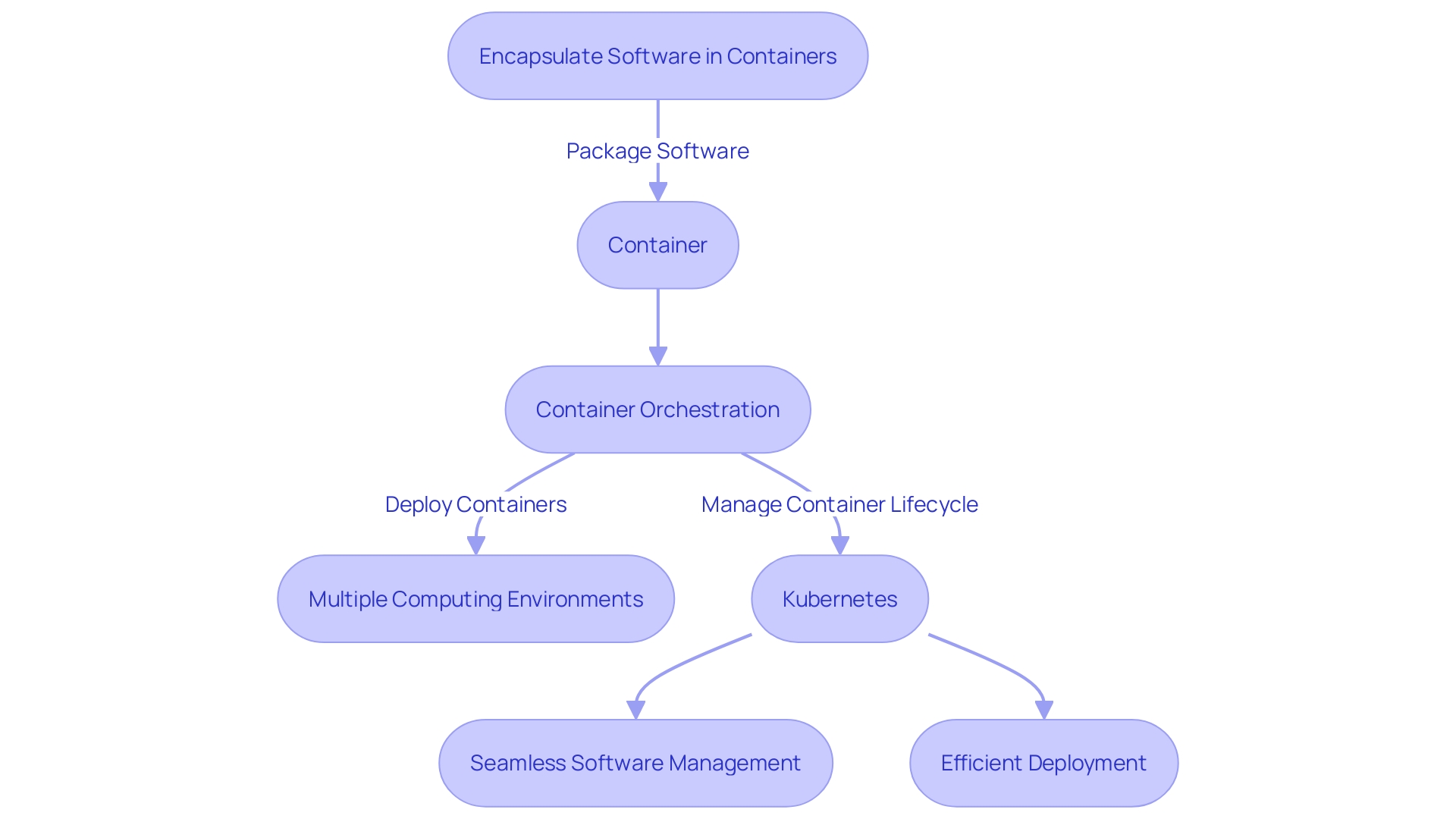
How Container Orchestration Works
Managing containers is a crucial element in contemporary software deployment, providing a methodical approach to automating the deployment, administration, and scaling of containerized software. When implementing microservices architecture, the coordination of containers becomes crucial for managing the intricate dynamics of handling multiple units that work together. At its core, container orchestration simplifies and streamlines tasks such as:
- Automated scheduling: Ensuring containers are properly allocated to hosts, balancing workloads efficiently across the entire infrastructure.
- Health monitoring: Continuously checking the status of units and hosts, orchestrating the replacement or repair of failed units to maintain system availability.
- Resource allocation: Dynamically managing and assigning CPU, memory, and storage resources to objects, optimizing their performance.
- Scaling: Seamlessly adjusting the number of instances to match fluctuating demand, thus ensuring optimal performance and cost-effectiveness.
- Networking: Managing intricate inter-container communications, enabling secure and effective data exchange between the various services within a system.
The arrival of solutions for managing and coordinating containers is in reaction to the changing environment of developing software, as demonstrated in Docker's 2024 State of Software Development Report. The report, featuring responses from over 1,300 participants, highlights the growing importance of cloud services, artificial intelligence/machine learning, and microservices, alongside the need for advanced security practices in development.
This aligns with the significant shift in software architecture, which has moved from monolithic systems to distributed microservices, and the subsequent adoption of units as a means to encapsulate and deploy software consistently across diverse environments. By utilizing a system for managing and coordinating containers, applications can be deployed consistently and effectively, regardless of the underlying infrastructure. The Linux Foundation's survey, conducted across a broad range of industries and company sizes, emphasizes the global embrace of cloud-native computing and technologies, further solidifying orchestration's role in the current and future state of software development.
Effective coordination not only tackles the immediate deployment challenges but also establishes a groundwork for a more flexible and responsive development process, capable of quickly adjusting to the ever-changing demands of the market. Fundamentally, the management of these objects is not only about preserving the current state; it's about enabling organizations to be innovative and remain ahead in a competitive environment.
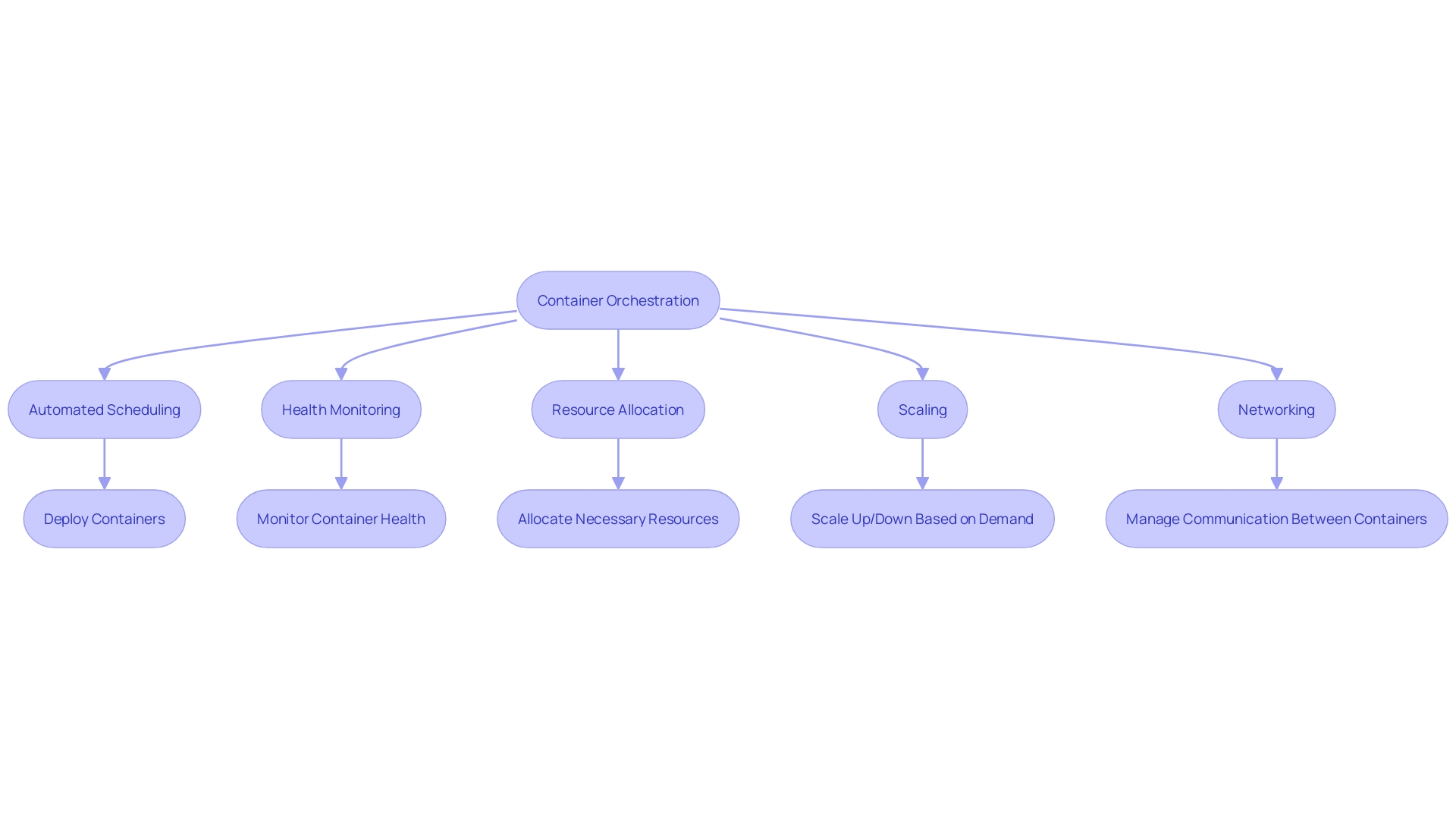
Key Components of Container Orchestration
Orchestration solutions for managing multiple units are complex systems that aim to streamline the coordination and operation of various entities, guaranteeing seamless interaction for the provision of scalable and dependable services. One fundamental aspect of such solutions is clusters, which serve as a logical congregation of Amazon EC2 instances. These clusters are the bedrock of the ECS infrastructure, providing a robust platform for launching and managing objects in a cohesive environment.
Furthermore, task definitions are crucial components similar to blueprints for your units. They meticulously outline the specifics of the image, resource allocations (including CPU and memory), network configurations, and supplementary settings crucial for the function.
These elements are essential in navigating the complexities of container orchestration. According to Docker's 2024 State of Application Development Report, the industry is continually evolving with trends like AI/ML integration and the rise of microservices reshaping the landscape. The report, which reflects responses from over 1,300 participants, underscores the significance of efficient deployment tools and processes.
Considering this, Google Cloud Run stands out as a remarkable solution, providing a fully managed platform that speeds up the deployment of containerized apps. It leverages Google's sophisticated cloud infrastructure, allowing containers to operate in a serverless manner, thus absolving users from the intricacies of infrastructure management.
Google Cloud Run is praised for its ease of use and flexibility, making it a top choice for various uses such as data migration, continuous integration and continuous deployment (CI/CD) pipelines, API development, and hosting, as well as SAP staff augmentation. It distinguishes itself with the automated scaling feature, which adjusts resources in response to traffic fluctuations, ensuring cost-efficiency and optimal resource usage for businesses of all scales.
The evolution of cloud-native computing over the past decade, primarily driven by Kubernetes, has been significant. Kubernetes has streamlined the organization of computing processes, playing a pivotal role in the management of sophisticated websites and cloud services. The shift from conventional virtual machines to containerized alternatives has not only been cost-effective but has also provided unparalleled portability to software across different platforms.
Grasping and selecting the appropriate solution for managing and organizing software applications is more than a technical choice; it's a strategic step that can determine an organization's competitive advantage in today's digital landscape, as emphasized by experts who stress the risks of deploying without a well-defined plan. As we keep adopting these technologies, knowledge from industry reports and real-world experiences will be priceless in directing organizations towards efficient and secure software deployment.
Container Orchestration Platforms
Several different platforms for managing containerized applications have emerged to tackle the complexities. These platforms provide comprehensive feature sets to simplify deployment, scaling, and operations of containment. One of the most well-known tools for managing and coordinating cloud-native applications is Kubernetes, a project that has become increasingly popular in the last ten years. Kubernetes not only streamlines the deployment process but also ensures efficient management of containers, enabling software to operate on fewer resources and thereby reducing costs. The growth of microservices architectures and the extensive embrace of cloud computing have additionally advanced the utilization of containerization, despite challenges in managing containers on a large scale. Docker, another influential player, has standardized packaging formats and tooling, greatly facilitating application packaging and deployment. Together, these technologies are pivotal in a fast-paced digital landscape, where the ability to deploy software quickly and reliably is a competitive necessity.
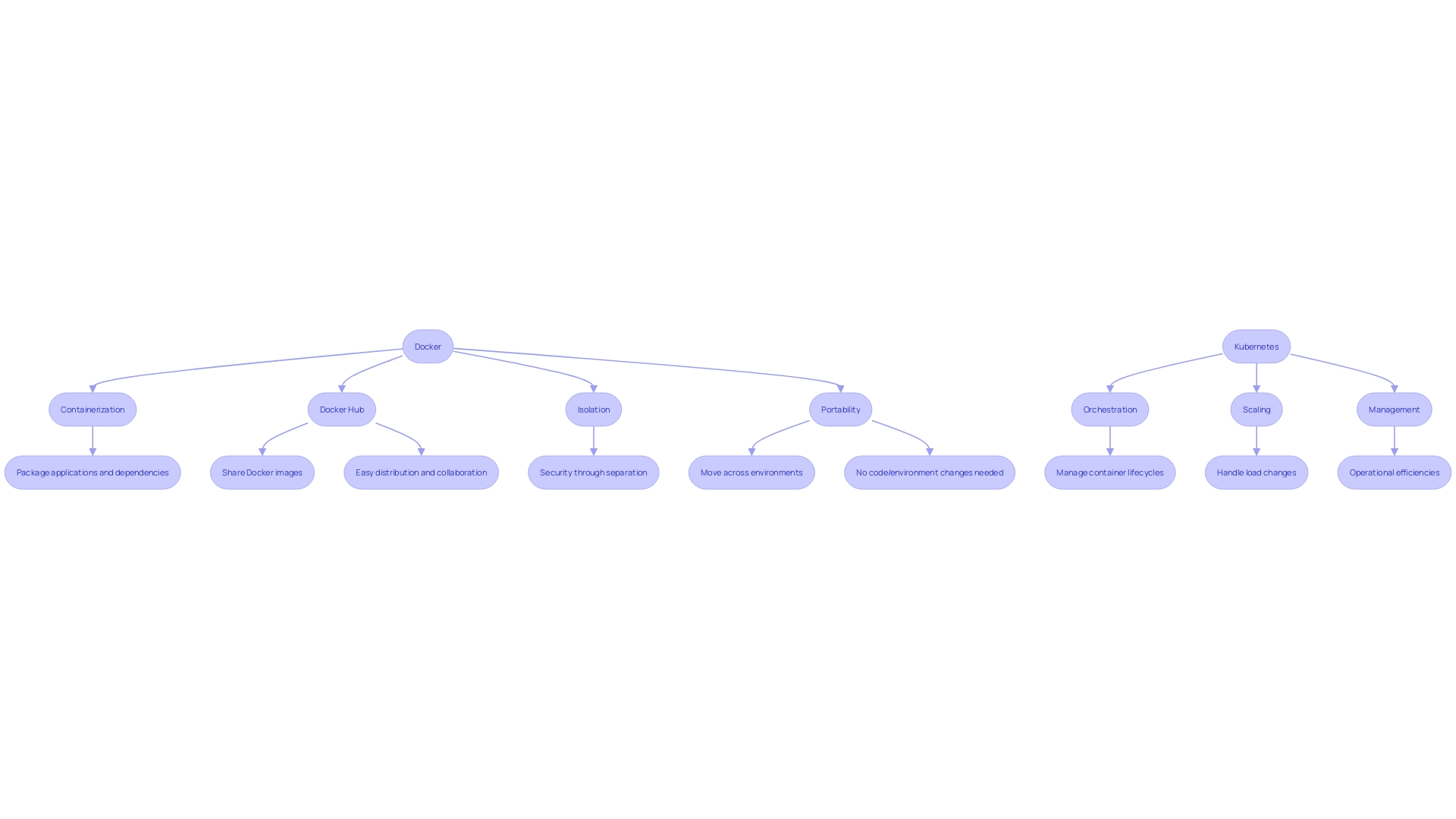
Popular Container Orchestration Tools
Apart from all-inclusive container management systems, the environment provides a wide range of specialized tools that focus on specific aspects of container organization. These utilities can either supplement orchestration platforms or function independently to cater to specific needs. For example, Docker—synonymous with containerization—allows developers to encapsulate their software along with their environment, libraries, and dependencies, ensuring consistency across various computing landscapes. The Docker daemon oversees management of the objects on the host system, interpreting instructions from the Dockerfile, a crucial document that dictates the construction of Docker images. This guarantees accurate setup, construction, and running of programs within receptacles, an essential characteristic in contemporary software development and deployment paradigms.
The container orchestration landscape is continually evolving, with Kubernetes emerging as the bedrock of modern computing orchestration. Marking ten years of impact, Kubernetes manages containerized programs, unseen yet essential, across advanced websites and cloud services. It owes part of its lineage to Docker, which revolutionized the way software is run by introducing containers—lightweight and resource-efficient alternatives to traditional virtual machines. Containers not only reduced computational resource requirements but also broke the shackles of platform dependency, enabling seamless application portability.
Given these advancements, organizations need to navigate through a variety of data coordination tools, each with distinct characteristics, scalability choices, and learning curves. The task is complex, with a myriad of tools available and often inconsistent terminology. Nonetheless, the selection of an apt orchestration tool is critical, considering long-term costs and infrastructure compatibility. Practical uses of these technologies have solidified their standing in the software development realm, with Docker being emphasized by the State of Development Report 2024. The report, based on a survey of over 1,300 industry participants, sheds light on the prevailing application development landscape, underscoring the pivotal role of cloud services, AI/ML, and the adoption of microservices in shaping modern software practices.
The tool management landscape is a testament to the technology's maturity and the industry's commitment to it. Google's recent submission to the Cloud Native Computing Foundation of a Go apps container initiative, the rise of Docker alternatives, and a Linux Foundation study on cloud-native computing trends further confirm the active and continuously expanding realm of container management. As the technology continues to mature, it is imperative for development teams to leverage the right tools and strategies to not just remain competitive, but to excel and drive innovation in their respective domains.
Multi-Cloud Container Orchestration
By embracing multi-cloud container management, organizations can now deploy and oversee containerized software in diverse cloud ecosystems, tapping into the unique advantages each cloud provider offers. Key considerations for this strategic approach include ensuring operational consistency and enabling workload portability across various platforms. A recent OVHcloud executive report, surveying over 500 IT decision-makers, reveals that 62% of organizations are already using multi-cloud strategies, with another 18% transitioning towards it. The report emphasizes the importance of selecting the appropriate cloud environment for specific workloads, a practice which 64% of organizations believe they will increase over the next two years. Notably, the flexibility to choose the optimal cloud environment was identified as a main strength by half of the respondents, and improved agility was cited by 41%. As multi-cloud environments become the norm, understanding the nuanced differences between cloud providers is crucial. Insights from the State of Multi-cloud 2024 report, which includes perspectives from 300 architects and engineering directors, highlight that while major public cloud offerings may seem similar at a glance, the details can make a significant difference. These nuances are often the crux of challenges that hinder broader multi-cloud adoption. For companies contemplating a multi-cloud strategy, the report acts as a valuable asset, offering expert analysis on the economic and regulatory effects on multi-cloud implementation, as well as the best practices for developing resilient multi-cloud solutions.
Best Practices for Container Orchestration
Container management is leading the way in a technological revolution in software deployment, enabling businesses to launch software quickly and reliably. A strategic approach to orchestration of objects is akin to navigating with a compass, preventing the arduous consequences of troubleshooting and issue resolution.
Key practices in container management involve: - Leveraging Docker, a platform that has simplified application deployment in portable containers, thereby reducing resource costs and enhancing program portability across various platforms. - Utilizing Kubernetes, a system that manages infrastructure resources across servers, balancing application demands with available computational resources. - Embracing tools and processes that cater to the rising importance of cloud and AI/ML in software development, as well as the shift towards microservices and proactive security measures.
As the company commemorates ten years of leading cloud-native computing, it's evident that containers have become a fundamental element of contemporary computing, with Kubernetes orchestrating tasks behind the scenes of numerous advanced online services. This evolution is highlighted in the 2024 State of Application Development Report, which reflects on the expanding roles of AI and microservices, informed by insights from over 1,300 development professionals.
Managing containers not only simplifies deployment but also creates an environment for innovation, enabling teams to excel through the implementation of effective procedures and customized tools in line with their workflows, as highlighted by Nahid Samsami, Vice President of Developer Experience at the containerization platform.
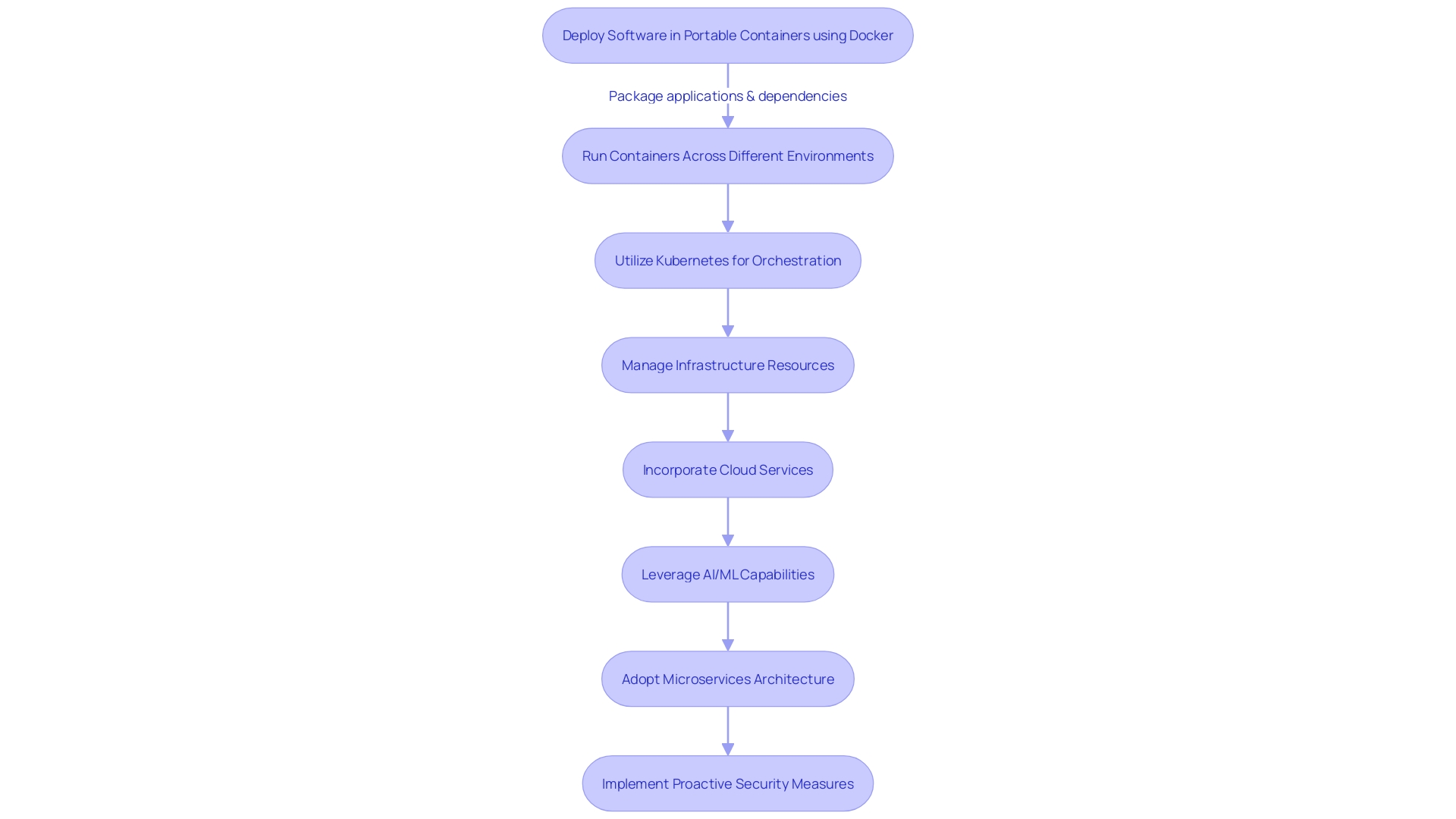
Common Use Cases for Container Orchestration
Container orchestration is integral to modern software development, offering key benefits across various industries and use cases. An outstanding example includes the tool, central to enterprise-grade systems. As one executive stated, Docker has become an indispensable tool due to its market penetration, integration capabilities, and ubiquity, making it a top choice for enterprise architecture deployment.
The gambling and gaming giant Tabcorp showcases the transformative effect of managing and organizing. As a major player listed on the Australian Securities Exchange, Tabcorp faced development and deployment hurdles with a multi-faceted environment of diverse teams. These teams, each working with different services like Java, Scala, Nodejs, and Microsoft .Net, led to inconsistencies. Despite automation attempts with Ansible, manual setup errors compounded these issues. The implementation of a system to coordinate and manage receptacles provided a resolution to streamline procedures and minimize discrepancies among their teams' workflows.
The release of Kubernetes at Docker in 2014 marked a revolutionary moment in the industry. Google's open-source solution for orchestrating objects has shifted how the internet scales, enabling the most important applications in the world today to function. Kubernetes, alongside launches like Apache Mesos and Red Hat's Gear, has been pivotal in this shift.
Container orchestration transcends beyond microservices, debunking myths that limit its applicability. It's a versatile tool that enhances efficiency, resilience, and agility for various architectural styles, from monolithic systems to Service-Oriented Architecture (SOA) and API-led connectivity.
Considering the evolving landscape, the 2024 State of Application Development Report by the company, which is based on responses from over 1,300 participants, reveals the broad adoption of technologies for application deployment. The report underscores key industry trends, including the rise of cloud, artificial intelligence/machine learning (AI/ML), and microservices, as well as the shift-left approach to security. This aligns with Docker's commitment to improving development teams' capabilities, as highlighted by Nahid Samsami, Vice President of Developer Experience at Docker, who emphasizes the company's dedication to meeting market needs and enhancing developer workflows.
Getting Started with Container Orchestration
Embarking on a journey with orchestration of boxes need not be daunting. You can optimize and oversee your objects efficiently by comprehending the fundamentals of Docker—a platform that has transformed the software development landscape. Docker's containerization technology enables you to encapsulate software and its requirements into portable and consistent entities, which are applicable and consistent across various environments. This ensures that your applications run identically, whether on a developer's local setup or a production server, thus solving the infamous 'it works on my machine' challenge. Moreover, the seclusion offered by these objects enhances safety and prevents dependency conflicts.
To grasp the significance of Docker and the organization of containers, it's enlightening to revisit a pivotal moment in the industry. On June 10th, 2014, Google's VP of Infrastructure, Eric Brewer, during DockerCon, unveiled Kubernetes—an open-source solution developed by Google for managing and coordinating resources. The release of Kubernetes marked a paradigm shift, profoundly influencing the way the internet operates at scale. Alongside Kubernetes, other systems like Apache Mesos and Facebook's Tupperware were also introduced, reflecting the industry's rapid evolution and the growing importance of efficient storage management.
As you start with container orchestration, take into account the insights from the 2024 State of Application Development Report for container management, which is based on the experiences and practices of over 1,300 developers. This report highlights the current software development scene, emphasizing Docker's function as more than just a tool, but a fundamental aspect of contemporary application deployment and the open-source monitoring ecosystem.
With Docker's open standards and tools, including the Helm package manager, you're equipped to craft vendor-neutral solutions. This flexibility allows you to select from the best industry tools, such as Prometheus, to customize your strategy to your specific needs. By grasping these fundamentals and leveraging the collective knowledge and tools available, you can navigate the complexities of container orchestration with assurance and build a robust, scalable technology stack.
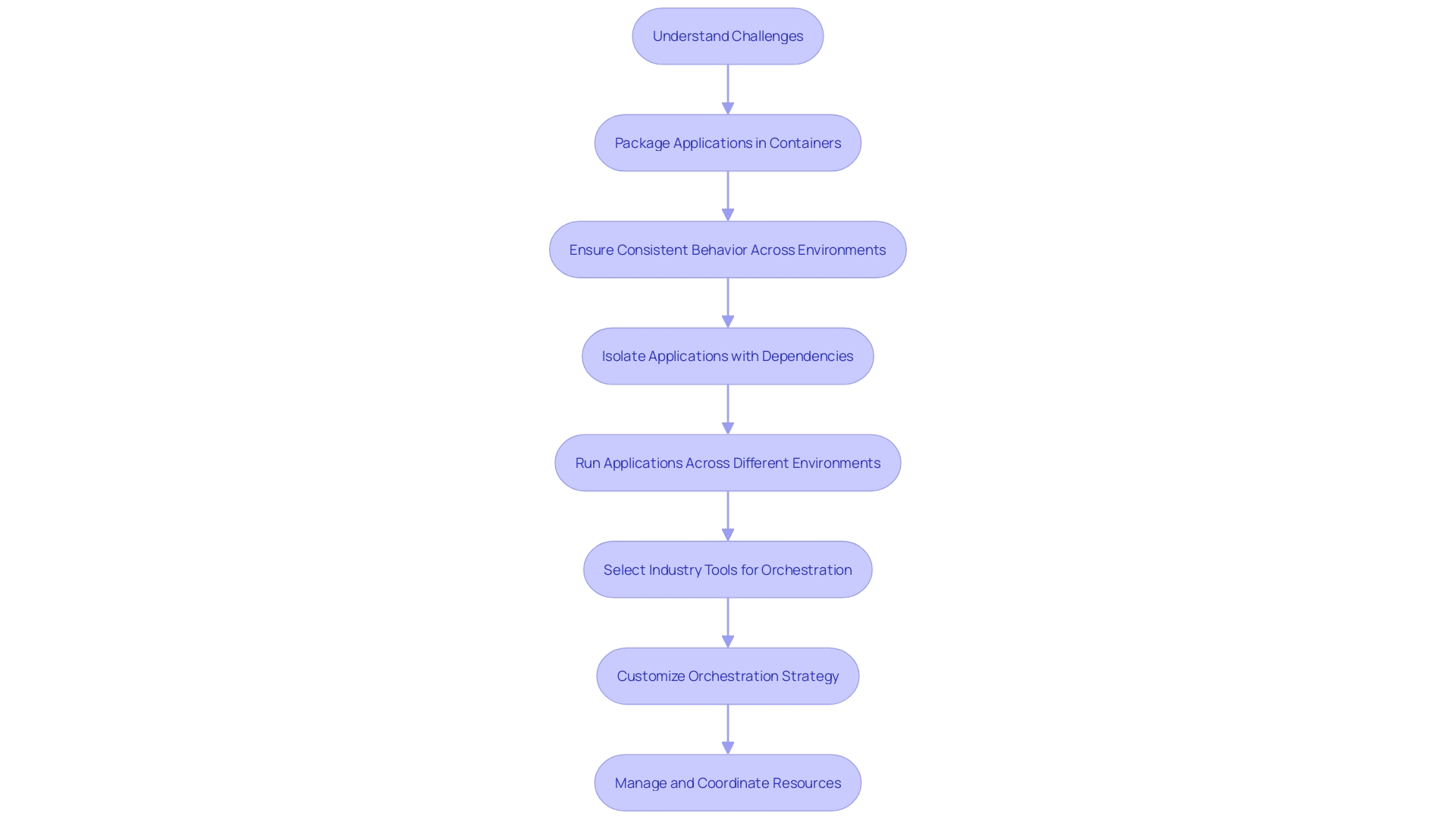
Conclusion
In conclusion, container orchestration is revolutionizing the way we manage and streamline the deployment, scaling, and operational aspects of containers. It offers significant efficiency and portability advantages, allowing applications to function uniformly across diverse environments. Kubernetes, a cornerstone of cloud-native computing, celebrates its tenth anniversary as a critical component in managing sophisticated websites and cloud services.
Container orchestration simplifies tasks such as scheduling, monitoring, resource allocation, scaling, and networking. It ensures optimal resource usage, application availability, and efficient communication between services. With solutions like Docker and open standards, container orchestration is reshaping backend system development and management.
Businesses now enjoy the flexibility of moving applications between platforms, ensuring consistency and reliability. Container orchestration has become indispensable for organizations like Tabcorp, streamlining their development lifecycle and reducing inconsistencies.
Container orchestration platforms like Kubernetes and Docker simplify the deployment, management, and scaling of containerized applications, reducing costs and enhancing portability. Embracing multi-cloud container orchestration allows organizations to deploy and manage applications across diverse cloud ecosystems, ensuring operational consistency and workload portability.
To adopt container orchestration effectively, organizations should follow best practices such as leveraging Docker and Kubernetes, embracing cloud and AI/ML technologies, and prioritizing proactive security measures.
Getting started with container orchestration can be simplified by understanding the essentials of Docker and its role in revolutionizing software development. By grasping the fundamentals and leveraging open standards and tools, organizations can navigate the complexities of container orchestration and build robust, scalable technology stacks.
In this exciting era of container orchestration, developers and organizations are empowered to innovate and stay ahead in a competitive landscape. By embracing these advancements, businesses can build resilient, scalable, and efficient applications that drive success in today's technology-driven world.




